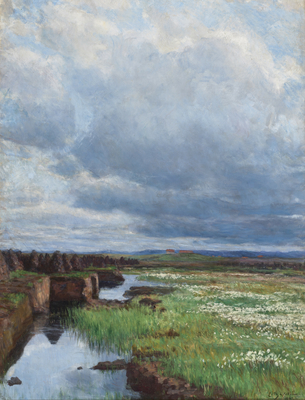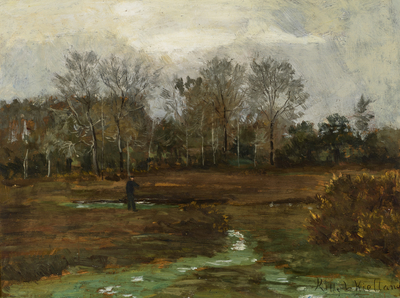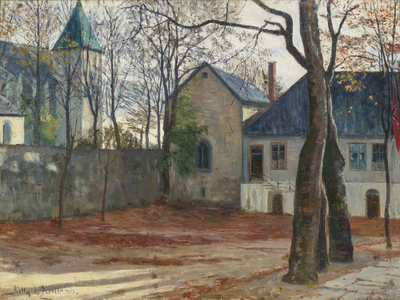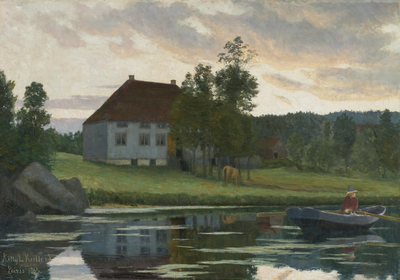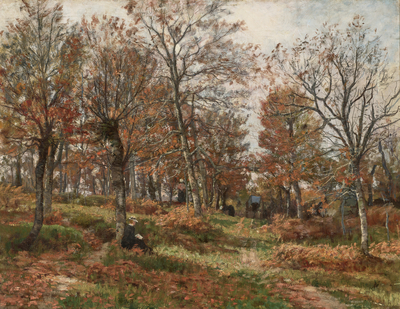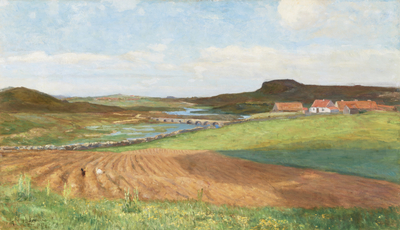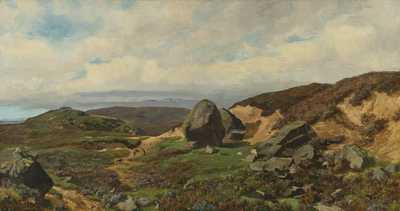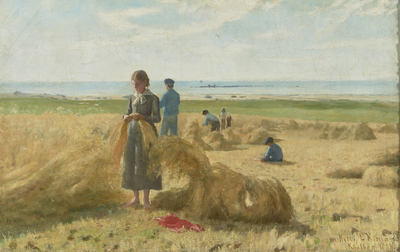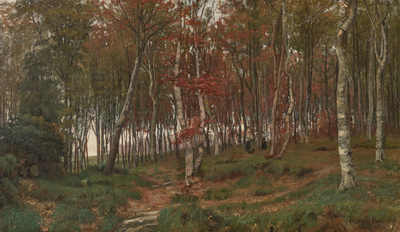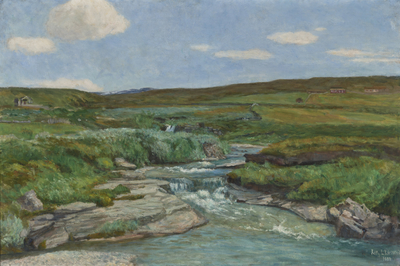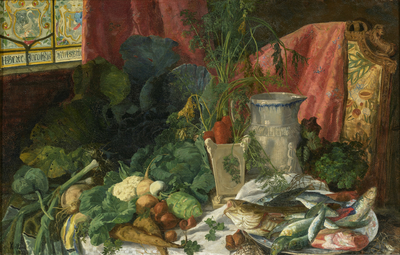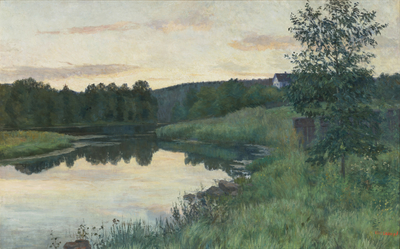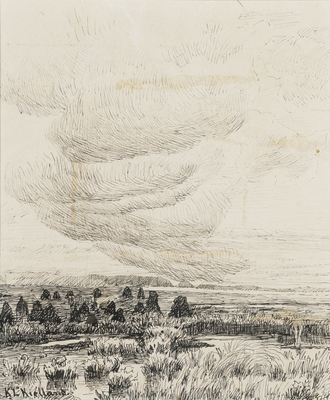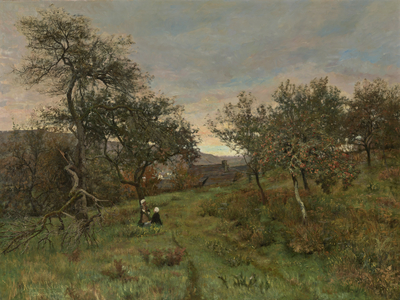Kitty Lange Kielland (1843-1914)
Christine (Kitty) Lange Kielland has a central position in nineteenth-century Norwegian art history. She is best known as the first to paint Jæren’s landscape.
Already in her lifetime, paintings of Jæren were treated as part of the canon of Norwegian art history. She depicted peat bogs, heather-blanketed moors, cultivated fields, sandy beaches, the ocean and clouds – always paying attention to the sky and Jæren’s expansive horizon. Kielland also created mood-evoking landscapes when she painted subjects from Southern and Eastern Norway; with these works, she was the first to draw Neo-Romanticism into Norwegian painting. Although less known as a painter of portraits and room interiors, her original depictions of rooms in the early 1880s attracted attention, for in advance of her peers, she painted them using principles of plein-air (open air) painting. As one of Norway’s first plein-air painters, she considered oil sketches as independent works of art. Kielland experimented early on with large formats in the open air in demanding weather conditions.
Kielland painted a landscape undergoing change. The society she lived in and actively participated in was also changing, through industrialisation, urbanisation and democratisation, national independence (achieved in 1905) and the start of the women’s emancipation movement. As a fearless participant in social debate, she wrote articles, contributions to newspapers and short stories where she discussed art, morality and women’s rights. With paintbrush and pen, she entered arenas traditionally reserved for men; she demanded her place in the landscape as well as in public discourse.
Inger M.L. Gudmundson (foreword); Kitty Kielland (2017), Stavanger Art museum. Uten Tittel forlag, Oslo.
